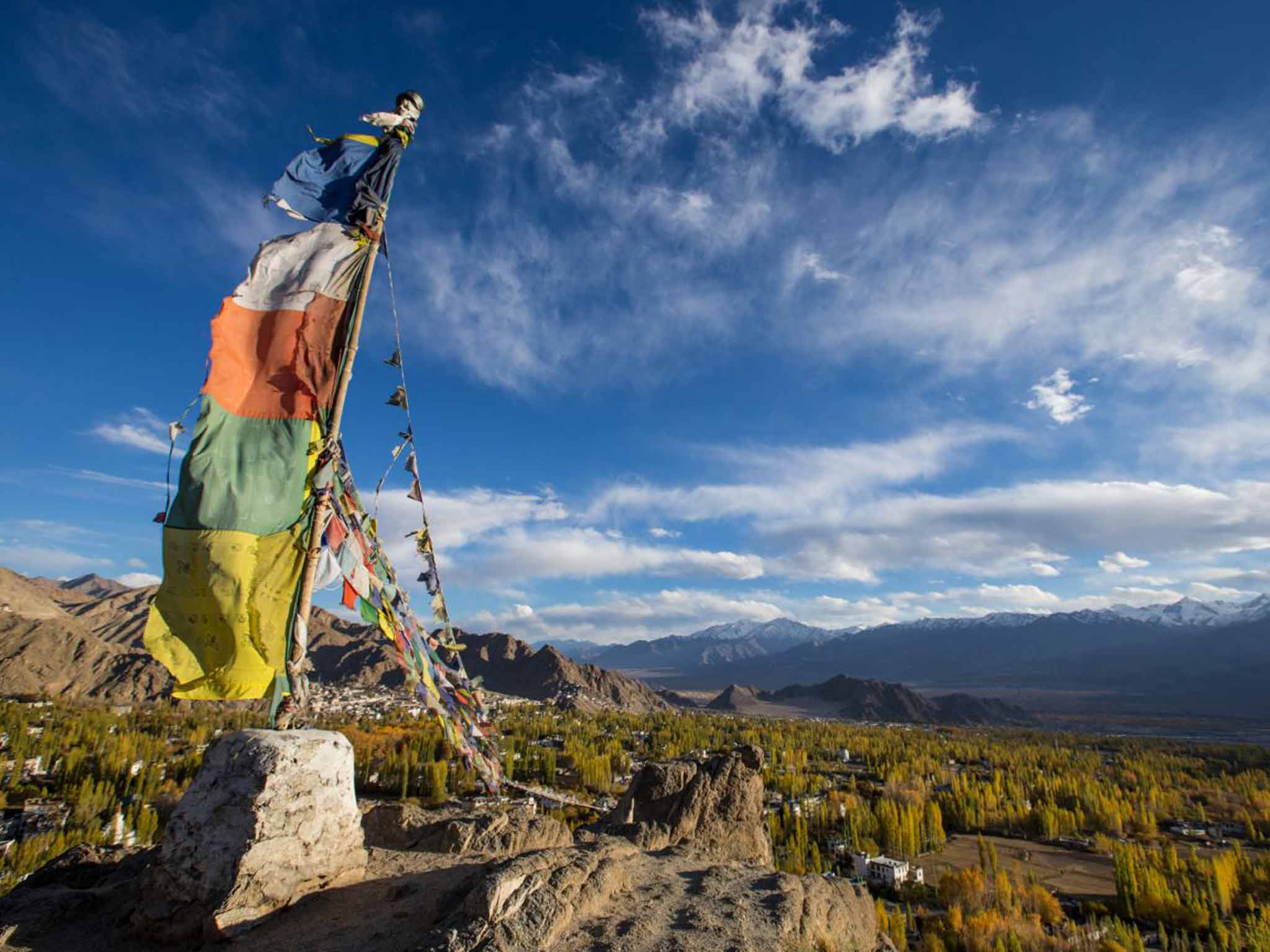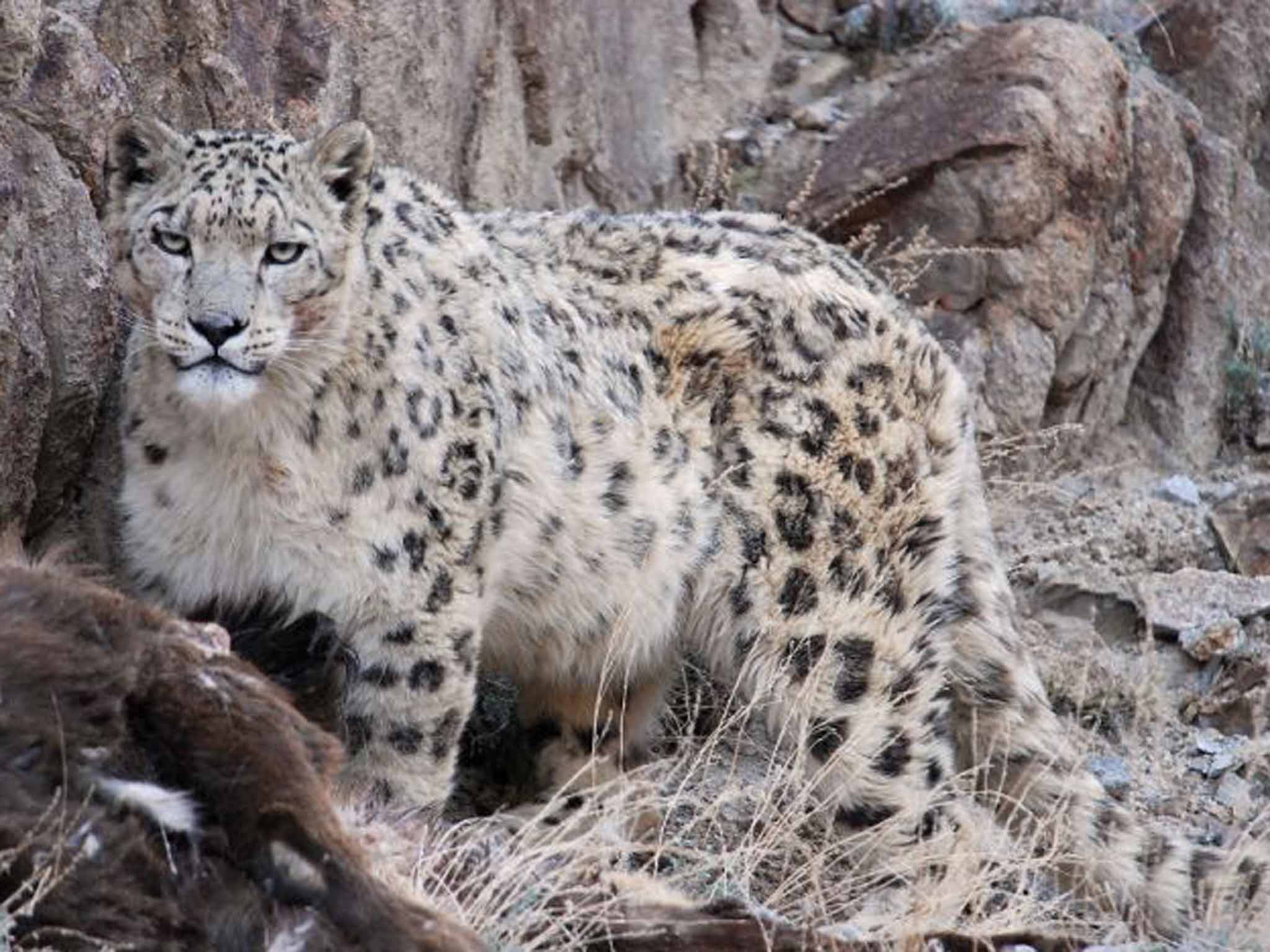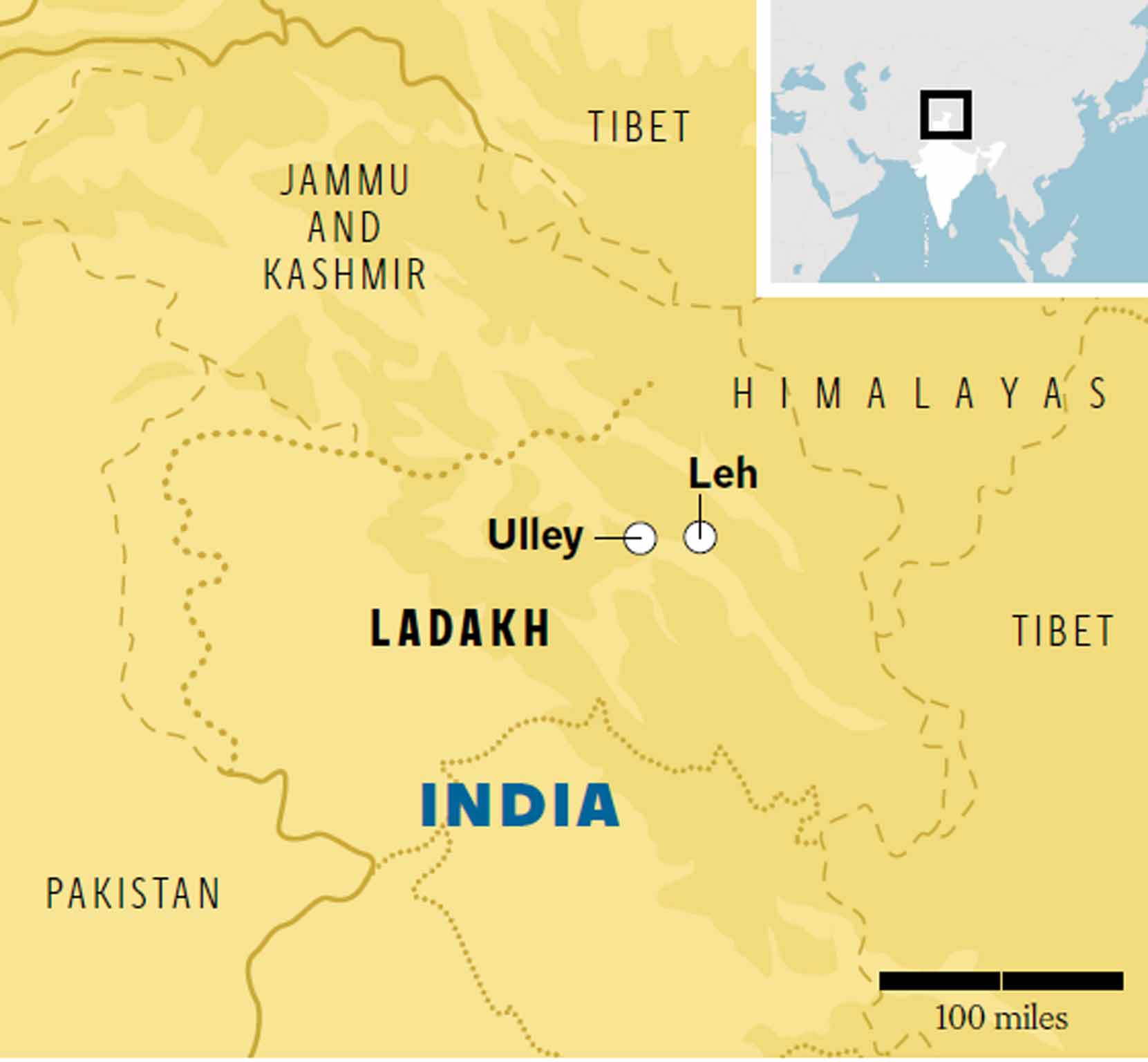The Independent's journalism is supported by our readers. When you purchase through links on our site, we may earn commission.
India’s Himalaya: Tracking the elusive snow leopard
Rather than killing snow leopards to protect their livestock, Ladakh farmers are now involved in their conservation

Your support helps us to tell the story
From reproductive rights to climate change to Big Tech, The Independent is on the ground when the story is developing. Whether it's investigating the financials of Elon Musk's pro-Trump PAC or producing our latest documentary, 'The A Word', which shines a light on the American women fighting for reproductive rights, we know how important it is to parse out the facts from the messaging.
At such a critical moment in US history, we need reporters on the ground. Your donation allows us to keep sending journalists to speak to both sides of the story.
The Independent is trusted by Americans across the entire political spectrum. And unlike many other quality news outlets, we choose not to lock Americans out of our reporting and analysis with paywalls. We believe quality journalism should be available to everyone, paid for by those who can afford it.
Your support makes all the difference.Pausing to suck in another lungful of thin, biting air, I take in the natural drama of Ladakh's Ulley Valley. Scree-covered ridges arc upward in every direction, while far below, on the valley floor, a small group of yaks graze on the meagre pasture. As the late afternoon sun bathes nearby mountains in short-lived warmth, an ominous mass of dark cloud sweeps across the snow-clad horizon.
Located in the Indian Himalaya in the state of Jammu and Kashmir bordering Tibet, Ladakh is as harsh as it is beautiful. A land of fast-flowing rivers, golden-leaved poplars, remote Buddhist monasteries and shimmering lakes, the region is essentially a cold, high desert. It is also home to a sizeable population of the world's most elusive big cat – the snow leopard.
To the villagers of Ladakh, the snow leopard is known as the “grey ghost”. After a few hours of breathless hiking, I'm starting to see why.

Adapted to their elevated environment in a way that humans never will be, the dappled, grey- yellow fur of this superbly camouflaged cat is almost invisible against rocks and snow. A wheezing, energy-sapped urbanite could be a few metres away from one and never know it. Luckily I have the eagle eyes of my young Ladakhi guide, Tsewang, to depend upon. Tsewang, however, doesn't fancy our chances.
“There may be as many as 10 leopards in this valley,” he explains, as we take yet another break. “But December is not a good time to see them. In January and February, when the heavy snows arrive, they come lower to hunt and mate.”
I'm under no illusion as to my chances of actually spotting a leopard. In his evocative 1978 book The Snow Leopard, American author Peter Matthiessen recounts his (ultimately fruitless) two-month search for a cat in the Nepalese Himalaya. Considering I have less than 48 hours in and around Ulley, the odds are heavily stacked against me.
With the sun dipping below the horizon, Tsewang and I decide to call it a day. Running his heavily dented binoculars over our spectacular surroundings one more time, my guide turns and heads for the village of Ulley, lower down the valley.
In the deepening gloom we pass a couple of whitewashed mud-brick buildings adorned with Buddhist prayer flags. Close by, an elderly farmer corrals his herd of yak for the night, while his equally wizened wife collects dried yak dung in a wicker basket. We exchange “tashi deleks” (hellos) before hurrying onward. One yak seems to have half its tail missing.
“A snow leopard did that,” says Tsewang. “If livestock is not properly locked up or guarded, it will be preyed on. It is hard enough for people to survive here as it is. When an animal is lost it can cause serious hardship.”
Ulley proves to be little more than a scattered collection of mud-brick houses. However, the village enjoys a stunning view down the valley, as illuminated wisps of cloud dance above snow-clad peaks in the dying light.
After a dinner of beef stew, rice and a bottle of Royal Stag whisky, Tsewang and I make our way over to visit the village headman, Norbu. We are invited to share yak butter tea in the main room of his two-storey house, together with the rest of his family. Seated cross-legged on an ornate rug, Norbu confirms Tsewang's words.

“Yes, leopards take our animals from time to time,” he explains through my guide. “A few times I have had to shoot them. I don't like to do this, but in the past it was a case of them or us.”
The next morning, Norbu's wife hands around fresh chapatis and mugs of milky instant coffee. Norbu takes down a dog-eared book to show me. Inside, on every other well-thumbed page, photos of livestock carcasses depict local leopard kills in graphic bloodiness. Yet today these kills are less frequent and are far less likely to result in retribution.
The reason for this is largely down to the work of the Snow Leopard Conservancy India Trust (SLC-IT), a non-governmental organisation founded in 2003 and based in Leh, the Ladakhi capital. Providing wood and wire netting, the SLC-IT has helped many Ladakhi farmers make their corrals and pens leopard-proof. It has also started a compensation scheme (hence the photo book), and taught villagers how to make stuffed animals. These are then sold to tourists as profit-making souvenirs.
But the SLC-IT's biggest success has been its burgeoning homestay scheme. In return for training in hospitality, hygiene and housekeeping, and items such as blankets and bed sheets, all Ladakhi households involved in the scheme must agree to stop killing snow leopards, even if they lose livestock. With snow leopard sightings apparently on the increase, the scheme already seems to be working.
“More cats is better for us, because it means more tourists,” says Norbu. “The income from tourists is important. A live snow leopard is now worth more to us than a dead one.”
After breakfast, we prepare to hike over to the neighbouring village of Saspotsey, where the SLC-IT's director, Tsewang Namgyail, has invited us to a training session. The villagers will be taught how to spot leopards and then engaged on a survey of the area.
With a freshly purchased toy leopard squeezed into my camera bag, I say farewell to Tsewang. Norbu invites me to come back in February and offers to guide me himself.
Tsewang, who seems none the worse for the previous night's merrymaking, is happy to be returning to Leh and his young family. “In the next few months I will be away a lot on leopard-watching tours,” he explains. “I need to make the most of this quiet time.”
As we're leaving the village, my guide stops and bends down on one knee. “Look,” he says, pointing out a line of four-toed pugmarks running across the dusty path. “Fresh leopard tracks from last night. The grey ghost came calling, but we were asleep.”
Getting there
Leh can be reached via Delhi on connecting flights from Heathrow on Air India (020 8560 9996; airindia.com). Emirates (0844 800 2777; emirates.com) flies from a range of UK airports via Dubai and Delhi, connecting to Leh on Jet Airways.
Staying there
Mystic India (020 7931 8273; mysticindia.co.uk) offers a range of Ladakh tours, including snow leopard-focused packages.
Homestays in Ulley and other Ladakhi villages can be booked through Himalayan Homestays (himalayan-homestays.com) and cost from around R500pp (£5.50) per night.
More information
British tourists need a visa to visit India, available for US$60 (£40) in advance; see bit.ly/VisaIndia
Join our commenting forum
Join thought-provoking conversations, follow other Independent readers and see their replies
Comments